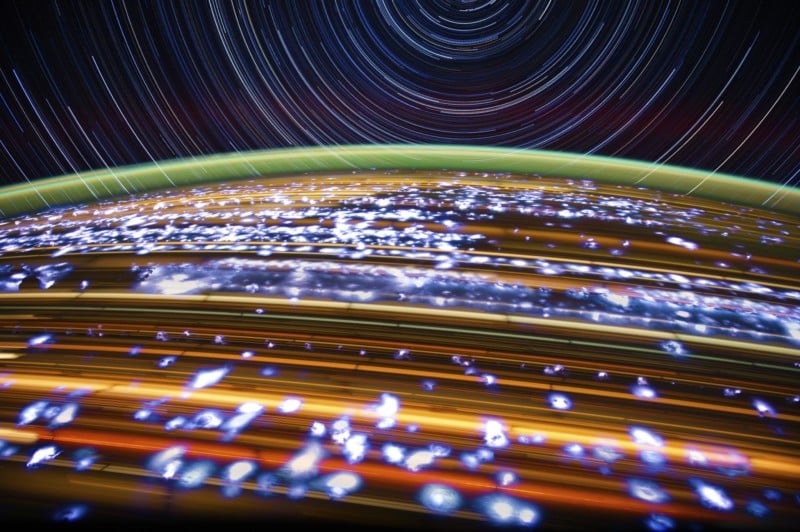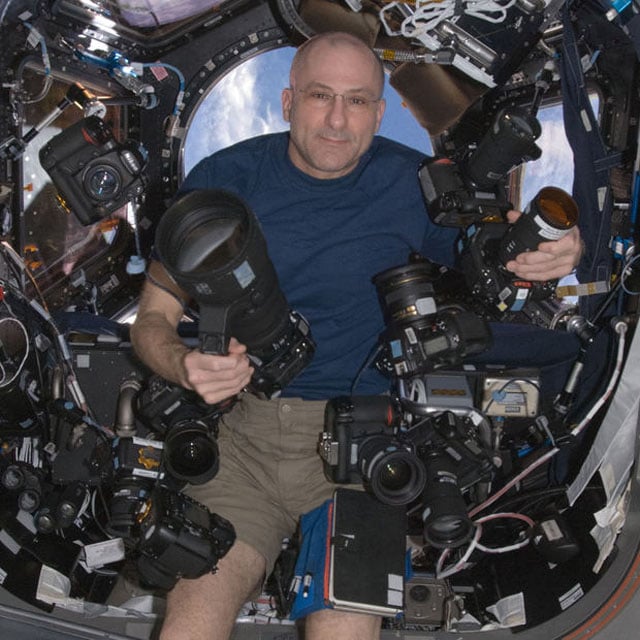Nikon Makes Special Firmware for Astronauts to Block Galactic Cosmic Rays in Photos
![]()
Space travel requires instruments made on Earth to be specially adapted to the harsh extra-terrestrial world — and that includes tweaking a camera’s software.
In an exclusive interview with PetaPixel, astronaut Don Pettit reveals the changes that Nikon makes to its firmware especially for NASA.
Galactic cosmic rays are high-energy particles that originate from outside the solar system that likely come from explosive events such as a supernova. They are bad news for cameras in space — damaging the sensor and spoiling photos — so Nikon made special firmware for NASA to limit the harm.
Pettit tells PetaPixel that Nikon changed the in-camera noise reduction settings to battle the cosmic rays — noise is unwanted texture and blur on photos.
Normal cameras have in-camera noise reduction for exposures equal to or longer than one second. This is because camera manufacturers don’t think photographers need noise reduction for shorter exposures because there’s no noise to reduce. But in space, that’s not true.
“Our cameras in space get sensor damage from galactic cosmic rays and after about six months we replace all the cameras but you still have cameras with significant cosmic ray damage,” explains Pettit.
“It shows up at fast shutter speeds, not just the slow ones. So we got Nikon to change the algorithm so that it can do in-camera noise reduction at shutter speeds of up to 500th of a second.”
Pettit says Nikon’s in-camera noise reduction “does wonders” for getting rid of the cosmic ray damage and that “trying to get rid of it after the fact is really difficult.”

That’s not the only special firmware feature that Nikon makes for NASA; photographers who shoot enough photos know that the file naming system resets itself eventually which is no good for the space agency’s astronauts.
“The file naming system on a standard digital system will repeat every so often and we can’t have two pictures with the same number,” explains Pettit.
“We’ll take half a million pictures with the crew on orbit and so Nikon has changed the way the RAW files are numbered so that there will be no two with the same file number.”
NASA is a Nikon Space Agency
Although NASA famously used Hasselblads during the Apollo era, it began using Nikon film cameras, like the F3, shortly afterward and has stayed with the Japanese manufacturer ever since; in part because Nikon is so good at making custom modifications that help the astronauts.
Pettit reveals that onboard the International Space Station (ISS) the crew has “12 to 15” Nikon D5s
“And then a whole slew of lenses, the FX lenses from the 8mm fisheye — which is one of my favorites — to 14mm all the way up to a prime 1200mm lens,” he adds.
“We’re in the process of switching over to the Z9 and we’re going to slowly replace the lenses with the Z lenses, initially replacing the lenses that require the mechanical autofocus.
“The D-series cameras have a little mechanical drive system that drives the focus mechanism in a lot of the earlier autofocus lenses and those are going to be the first candidates to be replaced with the Z lenses.”
Pettit is a veteran of three spaceflights and remains an active astronaut at 68 years old. He is also an accomplished astrophotographer known for incredible images he took while onboard the ISS.

Pettit recently spoke with PetaPixel about capturing a “lucky shot” of a plane passing in front of the Sun as he was taking photos of the solar disk from Earth.